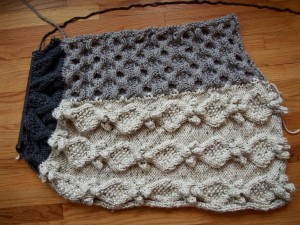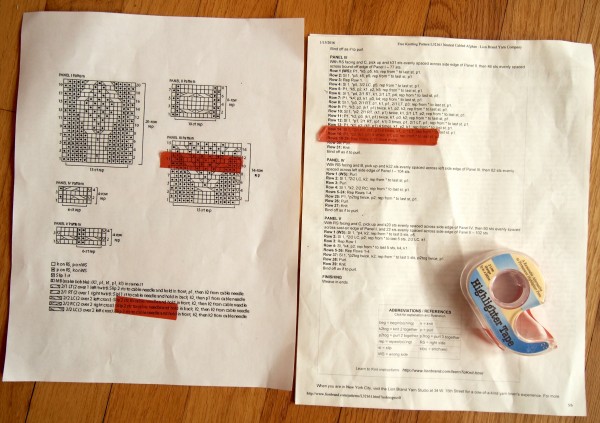When my friend Ana (pictured at right) recently had to undergo a worrisome medical procedure, my automatic impulse kicked in. “I’m going to knit you something,” I announced. That’s what I do when people I love enter crisis mode. Knitting is a way of coping, I suppose; it lets me feel helpful in situations I can’t control. It’s also how I turn nervousness into productivity, and creative energy into caring.
Ana’s situation deserved a big expression of my caring, I decided. She was going to get a blanket. Lion Brand’s pattern for the Neutral Cabled Afghan, done in three shades of Hometown USA® yarn, immediately caught my eye. Its soothing colors complemented the décor of the small apartment that Ana, a single mom, shares with her three-year-old son, and I knew the cabled designs would give the blanket pleasant weight and warmth. That the afghan is knitted on size 15 needles suggested I’d finish the project within a reasonable time, too—no point in starting something like this in winter if she wouldn’t get it until summer!
My hunch was correct. The project moved quickly, and in a week I’d knitted more than half. This is one of the most interesting patterns I’ve ever followed, and it’s definitely a skill builder. Knitters, listen up: if you want to become a cable maven without tears, here’s your education!
Viewed from above, the Neutral Cabled Afghan is a large log-cabin rectangle. If you’ve knitted a log-cabin pattern, you know it’s a modular construction that grows by attachment. You start by knitting a central piece, and enlarge it, not by sewing it to other pieces, but by picking up stitches along an edge and working another rectangle outward. The advantages of this type of modular construction are strength, potential variety of color, and potential variety of texture.

Cables aren’t difficult, but like any process with multiple steps, they can be complex. Rule number one: Read the Pattern Carefully. Rule number two: Go Slowly. As you move through the pattern, say the stitches aloud as you knit. That will keep you on track. And whether you follow the charted patterns or those written in words—Lion Brand provides both—please do this: enlarge the pattern on your computer printer or with a copy machine, and use highlighter tape to mark where you are in the pattern. Register your progress, too, by ticking off the lines as you finish them.

Maggie
I love Cables. I especially like them when there is no shaping. I want to do this afghan so badly. I have too many other projects to do now but it is on the list to do.
marmier
Hello, wonderfull, super. Please what is the reference of your patern.
Thanks in advance.
Christine
Selma Moss-Ward
If you click on the link above, where Neutral Cabled Afghan is written in orange, you’ll be connected to the pattern.